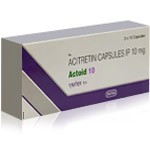Pustular Psoriasis: A Comprehensive Overview


Pustular psoriasis is a rare, inflammatory skin disease that presents in a dramatically different form from the more common plaque psoriasis. Marked by the sudden appearance of pus-filled blisters on reddened skin, it is not only painful but also physically and emotionally distressing for patients. While pustular psoriasis can affect people of all ages, it is particularly concerning due to its potential for systemic involvement and life-threatening complications if left untreated.
Unlike typical psoriasis, which primarily causes scaly, raised plaques, pustular psoriasis is characterized by waves of pustule eruptions that may be localized or widespread. Its unpredictable nature and the risk of flare-ups make it a condition that requires long-term medical oversight and patient commitment. Understanding what triggers pustular psoriasis, how to manage it, and the available treatment options is crucial for both patients and healthcare providers.
This article provides a detailed look at the causes, prognosis, prevention strategies, and treatments for pustular psoriasis, with particular emphasis on the role of Acitretin — a proven therapeutic agent in this condition.
What Causes Pustular Psoriasis?
Pustular psoriasis stems from a complex interaction between genetics and immune dysregulation. It is not caused by an infection, although the pustules may resemble those seen in bacterial skin conditions. A hallmark feature is the infiltration of neutrophils — a type of white blood cell — which aggregate in the upper layers of the skin to form sterile pustules.
One of the most significant genetic discoveries related to pustular psoriasis involves mutations in the IL36RN gene, which disrupts natural regulation of the immune system and promotes unchecked inflammation. This genetic predisposition can be triggered by external or internal stimuli such as infections (particularly streptococcal infections), withdrawal from oral corticosteroids, pregnancy, smoking, and stress.
Infections can act as a tipping point, especially in patients already dealing with other forms of psoriasis. There are also documented cases where environmental toxins or systemic illness have triggered pustular psoriasis in individuals with no previous skin disease. This diversity of triggers reinforces the importance of a comprehensive patient history in diagnosis and treatment planning.
Can Pustular Psoriasis Go Away?
Although pustular psoriasis is chronic, it is possible for patients to experience prolonged periods of remission — sometimes lasting years. These remissions can occur spontaneously or more commonly, as a result of effective and consistent treatment. The initial flare may be the most severe, and with proper medical support, subsequent flares can often be better managed or even prevented.
However, remission does not mean that the disease has been cured. Underlying inflammatory pathways remain active at a subclinical level and can reactivate when the body is subjected to physical or emotional stressors. This is why continued treatment and follow-up are essential, even when symptoms are not currently present.
Moreover, lifestyle plays a significant role in determining how long remission can last. Patients who quit smoking, reduce alcohol intake, maintain a healthy weight, and actively manage stress often experience milder symptoms and fewer relapses. When supported with a strong therapeutic alliance between patient and healthcare team, pustular psoriasis can become a manageable condition that allows for a high quality of life.
How Do You Stop Psoriasis from Spreading?
Preventing pustular psoriasis from spreading — both in terms of symptom flare-up and body surface involvement — requires a proactive, multifaceted approach. Central to this is early recognition of new symptoms and prompt treatment.
Patient education is crucial. Knowing what triggers to avoid can significantly reduce the risk of flare-ups. For instance, physical trauma to the skin (cuts, scrapes, or burns) can cause new lesions to form, a phenomenon known as the Koebner effect. Patients should take extra care to protect their skin and report any early signs of irritation or unusual redness.
Moreover, adherence to prescribed medication — even when symptoms are minimal — prevents the immune system from becoming reactivated. Some individuals may be tempted to stop therapy during remission, but doing so can result in a rebound flare, often more severe than previous episodes. This is especially true in patients who have experienced GPP, where systemic symptoms like fever and fatigue may accompany skin lesions.
Involving dermatologists, nutritionists, and psychologists in ongoing care enhances the ability to keep pustular psoriasis under control and maintain long-term skin health.
What is the Treatment of Choice for Pustular Psoriasis?
There is no one-size-fits-all treatment for pustular psoriasis. The treatment of choice is often determined by the severity of the disease, the extent of body involvement, and the patient’s medical history. Generalized pustular psoriasis, in particular, may necessitate hospitalization and aggressive therapy to stabilize the condition.
Systemic agents are the backbone of treatment for moderate to severe cases. Methotrexate and cyclosporine are traditional choices, known for their immunosuppressive effects. Biologic therapies have become increasingly popular, with drugs like infliximab and secukinumab offering rapid and targeted relief by blocking specific immune pathways.
A major advancement in the field has been the introduction of IL-36 inhibitors like spesolimab, especially for GPP flares. These biologics directly target the overactive cytokine pathways seen in pustular psoriasis, resulting in fast reduction of pustules and skin redness.
For localized pustular psoriasis, such as palmoplantar pustulosis, topical treatments, phototherapy, or low-dose systemic therapy may be adequate. The goal is to tailor therapy to each patient, ensuring effectiveness while minimizing side effects.
The Role of Acitretin in the Treatment of the Condition
Acitretin remains one of the most frequently used systemic agents in the treatment of pustular psoriasis, particularly in its chronic and resistant forms. It is a second-generation oral retinoid that acts by normalizing keratinocyte differentiation, slowing excessive skin turnover, and exerting anti-inflammatory effects.
One of its key strengths lies in its ability to prevent new pustule formation while gradually clearing existing lesions. Acitretin is especially effective in combination therapies, often paired with phototherapy (such as PUVA or narrowband UVB) for a synergistic effect. It can also be used as a maintenance treatment to prevent relapses in patients who have responded well to biologics or cyclosporine.
Despite its benefits, acitretin is not suitable for everyone. Women of reproductive age must exercise caution, as the drug is teratogenic and requires a long contraceptive period post-treatment. Additionally, side effects such as mucocutaneous dryness, hair thinning, and potential liver toxicity require regular monitoring.
Nonetheless, for many patients — especially men and postmenopausal women — acitretin represents a reliable and cost-effective long-term option for managing pustular psoriasis.
Final Thoughts
Pustular psoriasis may be a rare condition, but it carries significant implications for a patient’s physical and emotional health. The unpredictability of flares, the visibility of lesions, and the potential for systemic symptoms all contribute to the disease burden. However, thanks to evolving medical therapies and a deeper understanding of its immunological roots, pustular psoriasis is more manageable than ever before.
Acitretin continues to be a key player in treatment strategies, particularly when used thoughtfully and monitored appropriately. When combined with personalized care, patient education, and lifestyle support, pustular psoriasis can be effectively controlled, allowing individuals to live active, empowered lives.
Medically Reviewed by Dr. Faride Ramos, MD
(Updated at Apr 15 / 2025)

